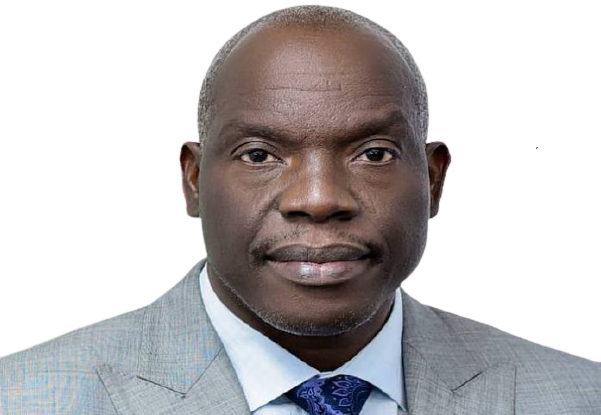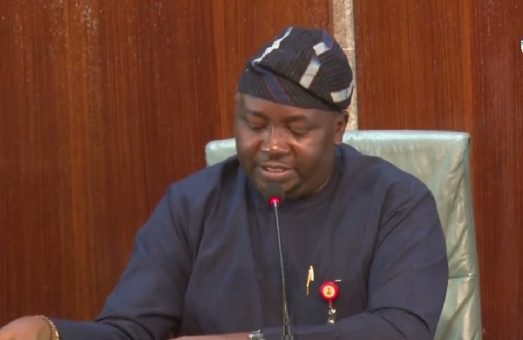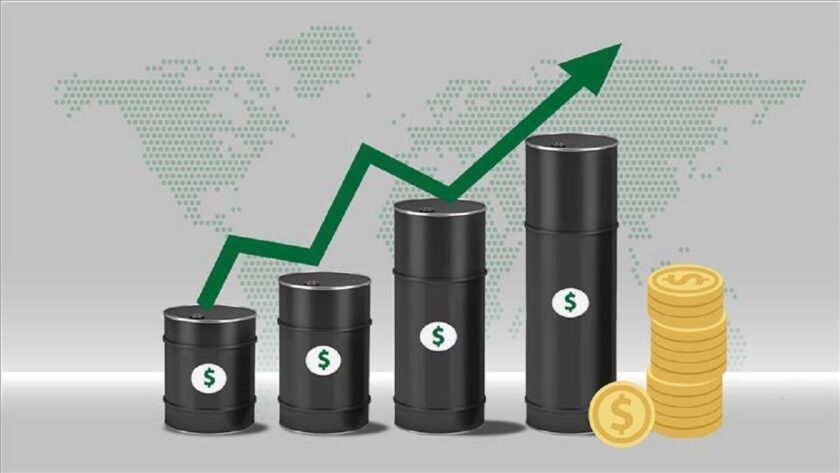Energy
NUPRC records 16 high impact achievements post-PIA

The Nigerian Upstream Petroleum Regulatory Commission (NUPRC) has said it has achieved 16 high impact feats since its establishment four years ago despite the legacy challenges it inherited from the pre-Petroleum Industry Act era.
According to a statement signed by the Commission’s Head, Media and Strategic Communication, Eniola Akinkuotu, in 2022, 2023 and 2024, the NUPRC surpassed its revenue target by 18.3 per cent, 14.65 per cent and 84.2 per cent respectively despite fluctuations in oil production and prices thus contributing largely to the country’s economic growth.
Still, it noted that between 2024 and 2025, it approved 79 Field Development Plans (FDP), that is, 41 in 2024 and 38 YTD 2025, with potential investment of $39.98 billion, made up of $20.55b in 2024 and $19.43b in YTD 2025.
NUPRC further said since its inception, crude oil production has increased with current average daily production of 1.65Mbopd expected to increase further with the Project 1Mbopd initiative which is aimed at achieving 2.5 Mbopd in 2027 compared to NUPRC commencement.
“Prior to the establishment of the Commission, the licensing rounds were opaque. They were beclouded by political influence which made the process lack credibility. However, the NUPRC with the support of President Bola Tinubu, transformed the process to be fully digital thereby enhancing transparency and credibility. It was the most transparent bid round on record in Nigeria’s upstream petroleum history as it leveraged digital technology, devoid of any human interference, in a manner adjudged to be in line with global best practices which was even attested to by the Nigeria Extractive Industries Transparency Initiative (NEITI),” the Commission said in a statement.
In line with the PIA 2021, implementing the ‘Drill or Drop’ policy which prescribes that unexplored acreages are to be relinquished, has also been implemented. The policy is designed to ensure the optimal use of oil assets and prevent dormant fields from tying up potential reserves. This policy successfully identified 400 dormant oil fields and has also propelled complacent oil companies to take quick action.
It noted further that the rig count in the upstream oil and gas sector, rose geometrically from eight in 2021 to 69 as of October 2, 2025. The latest rig count of 69 which comprises 40 active rigs, eight on standby, five on warm stack, four on cold stack and 12 on the move, represents a 762.5 per cent increase in barely four years. The number is expected to increase even further in the coming months. This shows a renewed investor confidence in Nigeria and that the right investment climate prevails now in the Nigeria upstream as daily actioned by the NUPRC.
The Commission approved divestments running into billions of dollars in 2024. From the Nigeria Agip Oil Company (NAOC) to Oando Energy Resources; Equinor to Chappal Energies; Mobil Producing Nigeria Unlimited to Seplat Energies; and Shell Development Company Nigeria Limited to Renaissance Africa Energy. The divestment is about investor portfolio re-ordering to focus on deep-offshore development.
To give meaning to the intent of the PIA, 2021, the Commission in consultation with stakeholders has developed 24 regulations. So far 19 have been gazetted while five await gazetting. These forward-thinking Regulations serve as tools for transparency and creation of enabling investment climate and benchmark best practices
In gas flaring commercialization efforts, the commission completed awards of flare sites to successful bidders under the Nigerian Gas Flare Commercialisation Programme (NGFCP). The programme is aimed at eliminating gas flaring and attracting at least $2.5 billion in investments.
Still, the Host Community Development Trusts have remitted N122.34b and over $168.91m as of October 2025. This translates to a combined remittance of over N358.67b based on the prevalent exchange rate in enthroning a conducive host community environment in Nigeria. The Commission is also overseeing at least 536 projects at various stages of completion including schools, health centers, roads and vocational centers being funded by the trust fund.
It is worthy of mention that as part of its mandate to develop the country’s hydrocarbon, the Commission has recorded 306 development wells drilled and completed between 2022 to date. It has also removed hindrances to exploration with 2D and 3D Seismic Data with the issuance of Nigeria’s first Petroleum Exploration Licence (PEL) for a large offshore geophysical survey covering 56,000 km² of 3D seismic and gravity data.
Furthermore, the Commission has reprocessed 17,000 line-kilometres of 2D seismic data and 28,000 square kilometres of 3D seismic data, producing sharper, higher-resolution images of the country’s petroleum systems thereby reducing the uncertainties that once hindered exploration decisions.
Other data acquisition includes: 11,300 Sq.km of newly acquired 3D data, processed to PSDM and 80,000 Sq.km of Multibeam Echo Sounding & Seafloor Geochemical Coring data.
In 2021, the average daily crude oil losses stood at 102,900 barrels per day or 37.6 million barrels per year. However, due to combined efforts of the General Security Forces and Private Security Contractors (TANTITA) as well as collaborative effort of the Commission this has reduced by 90 per cent to specifically 9,600bpd in September 2025. Furthermore, two pioneer regulations introduced by the Commission have also contributed to the success, namely: The Upstream Measurement Regulation and the Advanced Cargo Declaration Regulation respectively, have contributed as pioneer efforts at achieving transparency in hydrocarbon accounting.
Even outside the shores of Nigeria, the engineer Gbenga Komolafe-led NUPRC has continued to show leadership as it championed the establishment of the African Petroleum Regulators Forum (AFRIPERF). AFRIPERF provides regulators with the mechanism to harmonise oil and gas development policies to facilitate cross-border infrastructure development, benchmark fiscals and present strong voice for Africa in hydrocarbon advocacy globally.
Energy
8,500 transmission capacity: Low demand stalls generation of 3,500MW

• Nigeria conducts grid synchronisation test connecting 15 countries for four hours
The Ministry of Power yesterday said despite the availability of 8,500MW transmission capacity in the Nigerian Electricity Supply Industry (NESI), low demand from the Distribution Companies (DisCos) has limited generation to 5,000MW, stalling 3,500MW.
As of July 17, 2025, the wheeling capacity was 5,500MW.
But the ministry disclosed its recent wheeling capacity in Abuja during a media briefing where it announced that Nigeria successfully conducted a grid synchronization test with 15 West African countries for four hours on November 8, 2025.
“Today, the minimum grid capacity we can even communicate is 8,500MW of capacity. If our generation reaches 8,000 MW today, the grid can comfortably and conveniently transmit it,” Adelabu said.
Besides, the Nigerian Independent System Operator (NISO), Market Operation Executive Director, Dr. Edmund Eje, explained that since electricity cannot be stored, the industry only generates energy based on demand.
His words: “The amount of energy generated is equal to the amount of energy that will be transmitted, and it is also equal to the amount of energy that is demanded by the distribution companies. It is simultaneously consumed.
“You don’t stall energy anywhere. The transmission capacity can carry 8,500MW, but it can only carry what can be consumed. Generators will not generate more than what will be consumed at the same time.”
On synchronization, he said the feat of successful synchronization will not affect the allocation of energy for domestic consumption.
Eje said that although there is a regulation that Nigeria allocates 600MW for bilateral trade, production constraints presently limit it to 360MW.
Adelabu, however, described the synchronization test success as a step towards the elimination of grid collapse from the industry, noting it means that there is confidence that the system is now resilient.
He described it as a landmark development in the evolution of West Africa’s electricity architecture.
He confirmed that on 8th November 2025, Nigeria successfully conducted a grid synchronisation test connecting the national electricity grid with the interconnected West African Power Pool (WAPP) system.
According to him, the exercise represents the first time in history that Nigeria has operated in a unified, stable, and fully harmonised configuration with the rest of the sub-region.
He clarified that while it is not yet a permanent synchronisation, the successful test clearly demonstrates that regional technical alignment is feasible and marks a major step toward eventual full integration.
Adelabu further noted that the synchronisation exercise, conducted between 05:04 a.m. and 09:04 a.m., involved the Nigerian grid which includes Niger Republic and parts of Benin and Togo and the rest of West Africa’s interconnected systems covering Ghana, Côte d’Ivoire, Burkina Faso, Liberia, Sierra Leone, Guinea, Senegal, The Gambia, Guinea Bissau, and Mali.
He said for four uninterrupted hours, power flowed seamlessly across national borders, operating at a single stable frequency and proving that West Africa is now technically capable of functioning as a unified power bloc.
He said the achievement ranks among the most significant milestones in the history of WAPP.
He said the test marks the first successful large-scale synchronisation attempt since 2007, when a short-lived trial lasted only seven minutes before failing.
Adelabu said Nigeria has made history with the successful synchronization of the national grid with the West African Power Pool interconnected system.
For four unbroken hours, according to him, electricity flowed from Nigeria and Niger into the entire West African sub-region covering Benin, Togo, Ghana, Côte d’Ivoire, Liberia, Sierra Leone, Guinea, Senegal, Mali, The Gambia, and Guinea-Bissau operating at a single, stabilized frequency.
Earlier at the NISO Maiden Stakeholders’ Engagement, the Managing Director, Engr. Abdul Mohammed said the milestone recorded with the synchronization milestone is more than a technical success, since it positions Nigeria as a regional power hub; opens new avenues for electricity trading; unlocks foreign exchange potential; and reinforces investor confidence in the emerging Nigerian electricity market.
According to him, a resilient electricity market requires more than engineering; it requires relationships.
He said it requires trust among service providers, trust between the market and regulators, trust between the government and operators, and, above all, trust from the Nigerian people.
Energy
Brent rises 1.32% to $65 as drone strike halts 260,000bpd Russian refinery

By Grace Edet
Crude oil prices edged higher on Tuesday after a Ukrainian drone strike knocked out one of Russia’s largest refineries, disrupting 260,000 barrels per day (bpd) of processing capacity and raising fresh concerns over global supply stability as winter demand builds.
Brent crude was up 1.32 per cent at $65.05 per barrel at 9:00 WAT, with analysts warning that the outage could trigger further price increases in the coming days.
The Ryazan refinery, Russia’s fourth-largest and operated by Rosneft, has now been hit twice in less than a month as Ukraine escalates its long-range strike campaign. The latest attack halted the plant’s main crude distillation unit, which accounts for roughly 5 per y of Russia’s total refining capacity.
Industry sources told reporters that the refinery will remain shut until at least December 1, adding that “no product deliveries are expected before then,” while several secondary units have also been idled.
Prices Mixed Across the Energy Market
While Brent gained, WTI held steady at $60.90 per barrel, showing no change. Murban crude ticked up by 1.06 per cent to $66.46, whereas natural gas slipped 0.16 per cent to $4.368. Analysts say the muted price response masks rising anxiety beneath the surface.
“Market sentiment has turned cautious. If these outages persist or Moscow’s infrastructure comes under renewed fire, the supply picture could tighten very quickly,” an energy expert, Mustapha Shuaid said.
Winter Demand Meets Heightened Geopolitical Risk
The attack comes at a sensitive period, with temperatures dropping across Europe and Asia. Energy markets typically enter a high-demand phase from late November, making geopolitical disruptions more consequential.
Ukraine’s strategy has increasingly shifted toward high-impact targets. According to the Centre for European Policy Analysis, Kyiv is now focusing on “high-value refinery equipment like cracking units — assets that are harder to replace and more disruptive when damaged.”
Recent strikes have also hit terminals and export routes, including the strategic Novorossiysk port on the Black Sea.
Market Braces for Upside Risk
Although front-month prices remain relatively stable, traders say the underlying risk of a significant price upturn is rising. The outage at Ryazan, combined with the threat of additional strikes, could squeeze Russian product exports and rattle global supply chains.
“The next few weeks will be pivotal. Any escalation could be enough to disrupt balances and trigger a price rally, with spillover inflation risks for energy-dependent economies,” another analyst, Akin Owolabi told TheTrustNews.com.
With the Ryazan plant offline and Russia’s refining network increasingly exposed, the oil market enters the winter season on a fragile footing.
Energy
Diesel falls to ₦979/L in Lagos

By Grace Edet
Diesel prices in Lagos have dropped below ₦1,000 per litre for the first time in months, offering rare relief to transport operators, manufacturers and SMEs.
Market checks on Tuesday showed rates as low as ₦979 per litre at Mobil Idowu Egba, ₦980 at NNPC Retail Igando and ₦995 at Petrocam Isheri, driven by stronger domestic supply and heightened competition among retailers.
But fresh cost indicators suggest the drop may be short-lived. New data from the Major Energy Marketers Association of Nigeria (MEMAN) shows diesel landing cost has climbed to ₦980.28 per litre, signalling pressure on retailers and raising the likelihood of a price rebound.
According to market analysts, the rising landing cost is being driven by firmer international prices, higher cargo premiums and renewed bulk purchases by major distributors seeking to replenish stock.
They warn that the current sub-₦1,000 pump prices do not reflect the cost realities facing importers.
Foreign exchange volatility is compounding the pressure. The naira traded between ₦1,430 and ₦1,450 to the dollar over the past week, creating uncertainty for fuel traders and affecting forward pricing.
New coastal pricing formulas tied to Platts benchmarks are also shaping expectations for higher replacement costs.
Analysts note that Dangote Refinery’s lack of any announced price reduction is another sign that the current relief may not last. Market behaviour suggests wholesalers may soon begin building inventories in anticipation of upward adjustments.
“Diesel may have dipped below ₦1,000, but all cost indicators point to a likely rebound. Rising landing costs and FX pressure will inevitably filter through the supply chain,” a Godfrey Olatunde, a Lagos-based energy analyst told TheTrustNews.com.
With cost drivers now trending upward, stakeholders warn that the modest price drop recorded this week may be temporary as the market prepares for another adjustment.
-

 Art & Life8 years ago
Art & Life8 years agoThese ’90s fashion trends are making a comeback in 2017
-

 Entertainment8 years ago
Entertainment8 years agoThe final 6 ‘Game of Thrones’ episodes might feel like a full season
-

 Art & Life8 years ago
Art & Life8 years agoAccording to Dior Couture, this taboo fashion accessory is back
-

 Entertainment8 years ago
Entertainment8 years agoThe old and New Edition cast comes together to perform
-

 Sports8 years ago
Sports8 years agoPhillies’ Aaron Altherr makes mind-boggling barehanded play
-

 Entertainment8 years ago
Entertainment8 years agoMod turns ‘Counter-Strike’ into a ‘Tekken’ clone with fighting chickens
-

 Entertainment8 years ago
Entertainment8 years agoDisney’s live-action Aladdin finally finds its stars
-

 Business8 years ago
Business8 years agoThe 9 worst mistakes you can ever make at work





